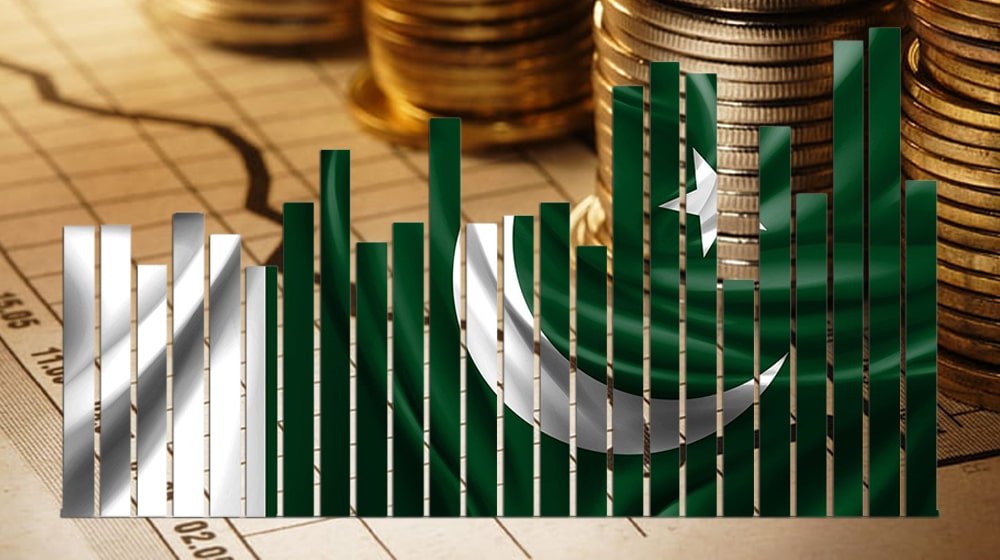The Ministry of Finance in its Monthly Economic Update stated that due to stability in economic indicators, inflation is heading towards single digits and is expected to remain within the range of 9.5-10.5 percent in August, further declining to 9-10 percent in September 2024.
The August 2024 Monthly Update & Outlook, released on Friday, indicated that exports are expected to remain within the range of $2.5-3.2 billion, imports $4.5-5.0 billion, and workers’ remittances (WRs) $2.6-3.3 billion in August 2024.
The stable outlook for the external sector depends on a stable exchange rate, revived domestic economic activities, better agricultural output, low domestic and global commodity prices, and improved foreign demand.
However, for the agricultural outlook, Kharif 2024 production is dependent on crop-specific weather patterns, which will play a critical role in crop yield. The recent and ongoing rainfall spells can have both positive and negative impacts on rice, sugarcane, cotton, fodder, and vegetables, provided the rains do not sweep away the farmlands.
The Large Scale Manufacturing (LSM) sector is projected to sustain a positive growth trajectory in the fiscal year 2025, supported by improved external demand, a stable exchange rate, receding inflation, and easing of monetary policy.
The outlook noted that Pakistan’s economy started fiscal year 2025 with firm positive developments, setting a positive tone for the months ahead. As of July 2024, a drop in CPI inflation suggested that the economy is on track to achieve single-digit inflation in the coming months. Both the fiscal and external sectors have shown resilience, attributed to improved management. The current account has improved, and the Federal Board of Revenue (FBR) tax collection exceeded the target.
The government managed to reduce the fiscal deficit to 6.8 percent of GDP in fiscal year 2024, down from 7.8 percent last year. The primary balance showed a surplus of 0.9 percent of GDP, in contrast to a deficit of 1.0 percent of GDP in fiscal year 2023. The fiscal performance remained robust due to prudent measures.
Total revenues grew by 38 percent due to a notable increase in both tax and non-tax collection. Non-tax collection grew by 75.4 percent to Rs 3,183.3 billion in fiscal year 2024, compared to Rs 1,814.8 billion last year. FBR revenue growth continued its upward trajectory and surpassed the target by Rs 3.8 billion set for July 2024, as net tax collection grew by 23 percent, with tax collection at Rs 659.8 billion from Rs 538.4 billion last year.
Large Scale Manufacturing registered positive growth of 0.9 percent in fiscal year 2024, against a contraction of 10.3 percent last year. However, in June 2024, LSM slightly decreased by 0.03 percent on a year-on-year (Y-o-Y) basis, mainly due to a decline in the production of textiles, non-metallic minerals, beverages, iron & steel, automobiles, and tobacco.
The auto industry began to pick up in July fiscal year 2025, as the production and sales of all vehicles witnessed an increase of 15.3 percent and 16.9 percent, respectively. Growth has been observed in the production of cars (89.6 percent) and trucks & buses (212.6 percent). However, total cement dispatches were recorded at 3.0 million tonnes in July FY2025, reflecting a Y-o-Y decline of 6.8 percent.
Agricultural credit disbursement recorded an increase of 24.8 percent during FY2024 to Rs 2,216 billion compared to the previous year.
Urea offtake during Kharif 2024 (April-July) remained at 1,822 thousand tonnes, 13.5 percent less than Kharif 2023, while DAP offtake increased by 8.2 percent to 419 thousand tonnes compared to Kharif 2023.
According to the Pakistan Cotton Ginners Association, as of July 15, 2024, a decline in cotton arrivals has been witnessed, with the total number of bales dropping from 0.858 million in 2023-24 to 0.442 million in 2024-25. In Punjab, cotton arrivals decreased to 0.114 million bales from 0.199 million bales last year. Sindh also experienced a reduction, with arrivals falling from 0.659 million bales to 0.328 million bales.
During July FY2025, the current account deficit shrank to $0.2 billion compared to $0.7 billion last year. Goods exports increased by 12.9 percent, reaching $2.4 billion, while imports were recorded at $4.8 billion, compared to $4.1 billion last year (16.3% growth). This has led to a goods trade deficit of $2.4 billion, up from $2.0 billion last year.
The exports of services grew by 5.8% to $0.6 billion, whereas imports declined by 8.0% to $0.8 billion, resulting in a reduced deficit of $0.2 billion compared to $0.3 billion last year.
Workers’ remittances reached $3.0 billion in July fiscal year 2025 (a 47.6% increase), with the largest share from Saudi Arabia. Pakistan’s total liquid foreign exchange reserves were recorded at $14.8 billion as of August 23, 2024, with the SBP maintaining $9.4 billion in reserves. Foreign Direct Investment (FDI) stood at $136 million, up 63.7 percent from the previous year.
Witnessing the diminishing inflationary pressures, the Monetary Policy Committee (MPC) cut the policy rate by a further 100 basis points to 19.5 percent, effective from July 30, 2024. During July 1 – August 2, fiscal year 2024, the money supply (M2) shrank by 3.2 percent (Rs. -1,173.1 billion) compared to a 2.0 percent decline (Rs. -627.6 billion) last year. The policy rate adjustment will keep inflationary expectations well-anchored and will support sustainable economic recovery in fiscal year 2025.










